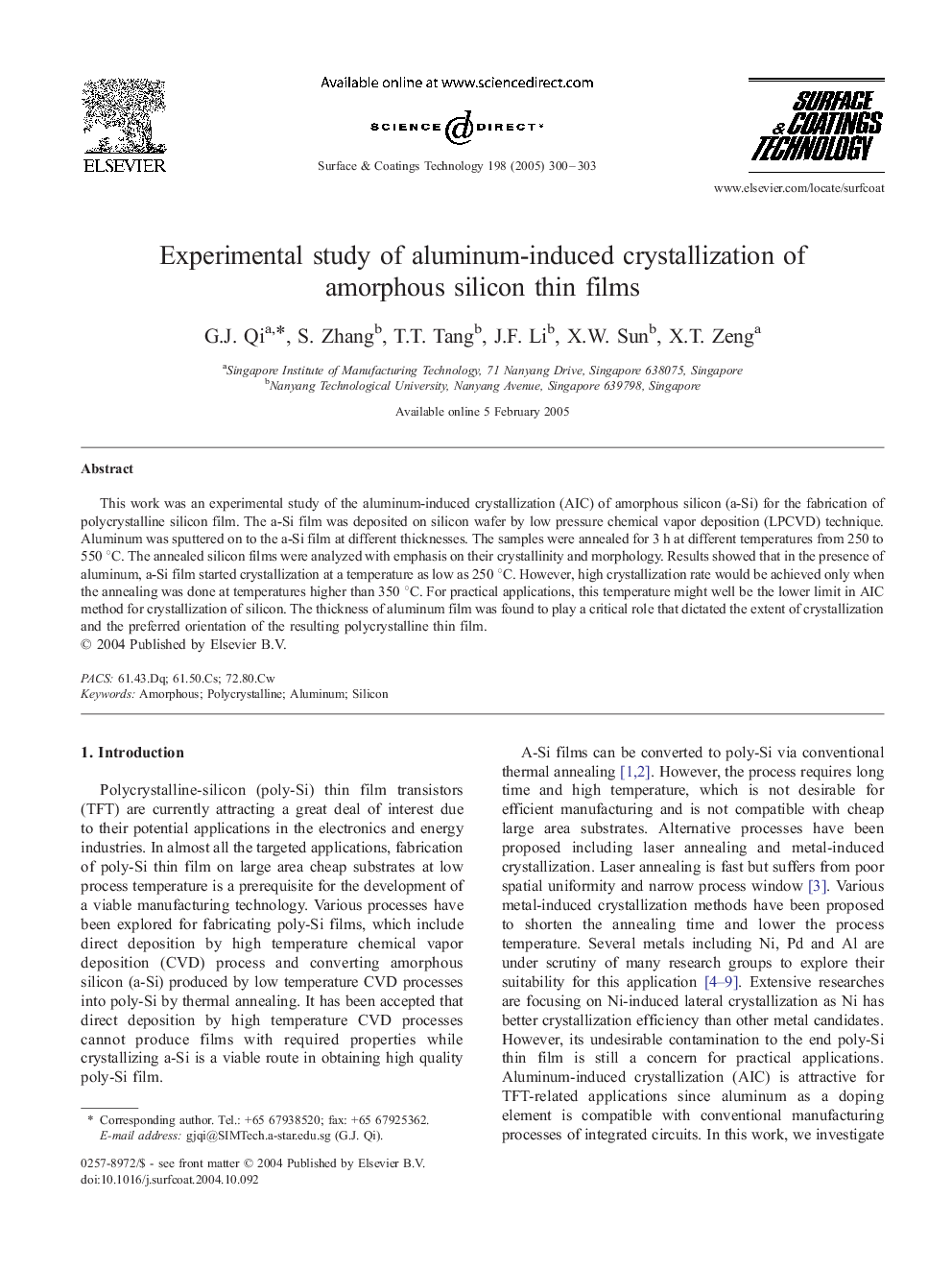| Article ID | Journal | Published Year | Pages | File Type |
|---|---|---|---|---|
| 9809583 | Surface and Coatings Technology | 2005 | 4 Pages |
Abstract
This work was an experimental study of the aluminum-induced crystallization (AIC) of amorphous silicon (a-Si) for the fabrication of polycrystalline silicon film. The a-Si film was deposited on silicon wafer by low pressure chemical vapor deposition (LPCVD) technique. Aluminum was sputtered on to the a-Si film at different thicknesses. The samples were annealed for 3 h at different temperatures from 250 to 550 °C. The annealed silicon films were analyzed with emphasis on their crystallinity and morphology. Results showed that in the presence of aluminum, a-Si film started crystallization at a temperature as low as 250 °C. However, high crystallization rate would be achieved only when the annealing was done at temperatures higher than 350 °C. For practical applications, this temperature might well be the lower limit in AIC method for crystallization of silicon. The thickness of aluminum film was found to play a critical role that dictated the extent of crystallization and the preferred orientation of the resulting polycrystalline thin film.
Related Topics
Physical Sciences and Engineering
Materials Science
Nanotechnology
Authors
G.J. Qi, S. Zhang, T.T. Tang, J.F. Li, X.W. Sun, X.T. Zeng,
